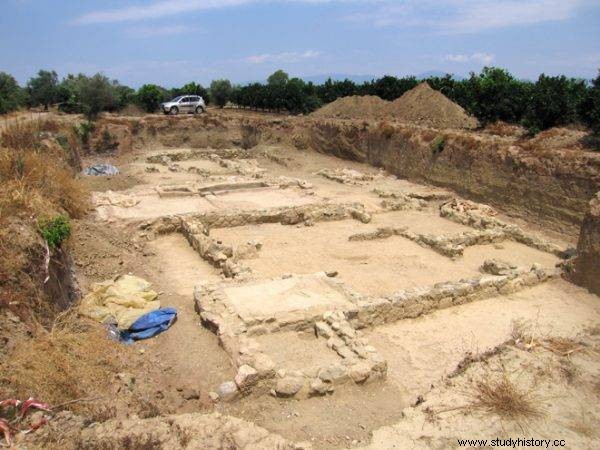The Greek polis Helike was to be the inspiration for the utopian vision of the extraordinary land that Plato first described. This is just one theory about Atlantis, but it is extremely popular in the scientific community. Do we really have the solution to the mystery of a sunken civilization before us?
According to many scientists, the prototype of Atlantis, the earliest mention of which appeared in the 4th century BCE. in the Platonic dialogues of Timajos and Kritias , was Helike's policy. The first information about the lost civilization was recorded by Plato in 360 BCE, only thirteen years after the tragedy that befell the inhabitants of Helike.
The city was located on the south coast of the Gulf of Corinth, about 150 kilometers west of Athens. In the 4th century BC Helike was rich in wealth and headed the twelve policies of the first Achaean League. He was subject to, inter alia, the overseas colony of Priene on the coast of Asia Minor or Sybaris in southern Italy.
The Curse of Poseidon
Helike was located in an area that remains one of the most seismically active in Europe to date. There have been tremors in this area for over four thousand years. It should come as no surprise, then, that it was Poseidon who was chosen as the main deity of this polis. His sanctuary at Helike was as popular as the Delphic oracle across the Gulf of Corinth.
Everything changed on a winter night in 373 B.C.E. Five days before the disaster, the inhabitants of Helike watched in amazement as mice, snakes and other creatures hurried from the coast to the higher areas . On the fifth night, "huge pillars of fire" flared in the sky, preceding the earthquake and the arrival of the ten-meter tsunami wave.

The first information about the lost civilization was recorded by Plato in 360 BCE, only thirteen years after the tragedy that befell the inhabitants of Helike.
The water engulfed the polis, its immediate surroundings and the ten Spartan ships that were docked in the port. After all, only the treetops of the grove at the temple of Poseidon were visible. The neighboring polis of Boura and the Temple of Apollo in Delphi were also destroyed. The catastrophe was attributed to the lord of the seas himself.
From the message of Eratosthenes, we learn about the statue of Poseidon sunk in poros (initially scientists interpreted this word as the waters of the Gulf of Corinth). About the ruins of Helike still visible under water, among others, Pausanias and Ovid.
Project Helike
In 1861, archaeologists discovered a bronze coin with an image of Poseidon's head from Helika. Unfortunately, they did not manage to get anything more. In the same year, 13 kilometers of the coast were underwater, at a depth of about 2 meters, as a result of a natural disaster. For years, the ruins of Helike were searched unsuccessfully in the waters of the Gulf of Corinth.
Only the discoveries under the Helike project led by Dora Katsonopoulou were to bring the expected results. The project was initiated in 1988. During its implementation in June 1995 there was an earthquake with a magnitude of 6.2 on the Richter scale. Ten people died in neighboring Aigio, sixteen in Eliki.
Steven Soter from the American Museum of Natural History, having collected reports on various phenomena that took place before this natural disaster, stated that they reflect the tales of ancients about events before the tragedy that fell on Helika - including there was a sound like a rushing wind, although no air movement was felt, "fireballs" (earthquake lights) appeared in the sky and the sounds of underground explosions were heard.

In 2001, ruins from the classical period were discovered, stretching almost a kilometer inland (including one of the city walls bent towards the sea). The ruins have been identified as the remains of Helike
In 2001, ruins from the classical period were discovered, stretching almost a kilometer inland (including one of the city walls bent towards the sea). The ruins were identified as the remains of Helike, which were destroyed in 373 B.C. Also found, among others fragments of ceramics, terracotta idols and a silver coin with the image of Apollo in a laurel wreath, which was minted in Sikjon. In addition, items from the years 2600–2300 BCE were found. It was also established that the first settlement in the study area was absorbed by the sea as a result of a natural disaster around 2000 BC.
Helike was included by the World Monuments Fund on the list of 100 most endangered places, incl. due to the danger of subsequent potential earthquakes.
